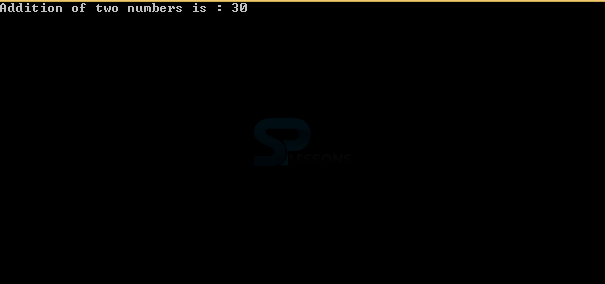 Description
Description
A Function is a User Defined Data Type. A function is used to perform some action it consists of Names,Parameters and Statements.In general function can be defined as a gathering of statements.In VB.Net functions will be treated as procedures where the sub is also a procedure. Following is a syntax which describes the functionality of each and every part.
 Syntax
Syntax
[vbnet] [AccessModifiers] Function Function_Name[(AttributeList)] As Datatype
[Statements]
End Function[/vbnet]
s
| Parts | Description |
|---|---|
| Modifiers | Used to provide Access permission by Access Public,Priviate,protected |
| FunctionName | Indicates the name of the Function |
| ParameterList | Specifies the List of the Parameter |
| ReturnType | Specifies the datatypeo f the variable and function returns |
 Description
Description
A function can return one value only. In PC programming, a return statement causes execution to leave the present subroutine and resume at the point in the code instantly after where the subroutine was called, known as its return address.We can return values in functions in two ways as follows.
- Returning Values by using return statement.
- Assigning values to the function name.
 Example
Example
Following is an example which describes the functionality of a function.
[vbnet]
Module FunctionExample
Function Add(ByVal x As Integer, ByVal y As Integer) As Integer
Dim Result As Integer
Result = x + y
Add = Result 'Returns a value
End Function
Sub Main()
Dim a As Integer = 10
Dim b As Integer = 20
Dim result As Integer
result = Add(a, b)
Console.WriteLine("Addition of two numbers is : {0}", result)
Console.ReadLine()
End Sub
End Module
[/vbnet]
Output:
Output will be as follows in the console.
 Points
Points
- The role of function is same in all the computer languages.
- The body of function will have a gathering of statements.
- Main method is also a function.




